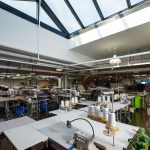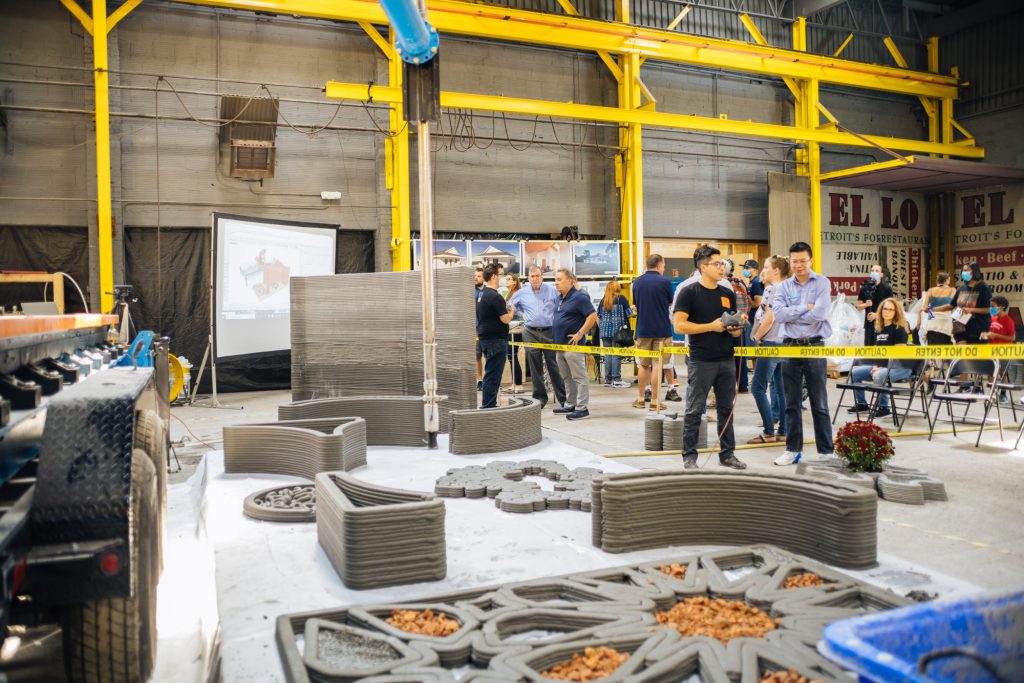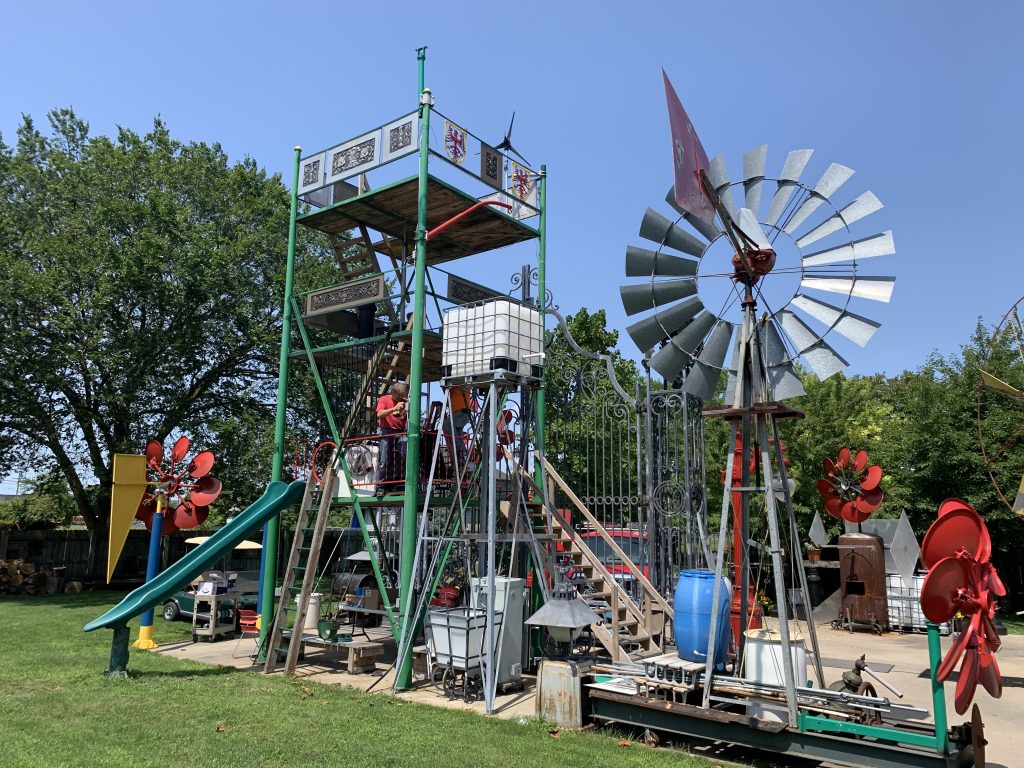Detroitisit, in partnership with the Consulate General of the Kingdom of the Netherlands in Chicago, and the Embassy of the Kingdom of the Netherlands in Washington DC will host a Sustainable Urban Design Summit in an effort to develop creative solutions through a global yet hyperlocal virtual program in partnership with and during the globally recognized Dutch Design Week.
Olga Stella, Vice President of Strategy and Communications at the College for Creative Studies and Executive Director of Design Core Detroit, will offer key insights and examples of how education-oriented design initiatives are enhancing the progression of sustainability and a circular economy in Detroit. This discussion will focus on how learning and development are fundamental in not only making an immediate impact on our environment but also build a future generation who will carry this movement forward.
Join us for a fresh discussion between Dutch and Michigan based progressive leaders working to apply sustainable urban design and circular economy applications in architecture, design, policy, development, mobility, materials sourcing, and re-thinking how cities, citizens in them, their social cohesion, and the buildings that occupy space coexist.
Hear Olga’s perspective on the topics on October 19th, 2021. The Sustainable Urban Design Summit will take place virtually over Zoom on October 19th and 21st at 9:30 am EST and 15:30 CET simultaneously.
Register for your FREE space to attend the Summit on Zoom here: sustainableurbandesignsummit.com
In 2015, Detroit became the first and only city in the United States to receive the UNESCO City of Design designation. Thanks in great part to Director Olga Stella who has a unique and insightful perspective on the role that sustainable urban design has on the landscape of Detroit, and vice versa.
Adapting the Environment Versus Erasing Neighborhoods
Firstly, Stella views the repurposing of materials, resources, structures, and buildings as areas in which

OLGA STELLA VP DESIGN CORE DETROIT
Detroit truly shines, and says this can be witnessed in neighborhoods all around us every day.
“Put simply, Detroiters are extremely adept at using the materials at hand to make useful – and beautiful – places and products,” she says.
And when sustainability is addressed from not only an environmental perspective but from a cultural one as in this thoughtful reuse of objects found in and around communities, it allows us to adapt the fabric of our built environment as opposed to erasing neighborhood history.
You can see this in many places, where broken concrete and other discarded building materials are used to develop new landscapes, garden beds, park walls, seating, and even playscapes, says Stella. Within virtually any neighborhood, you’ll find examples of the ingenuity of a community activist who has figured out some way to think about the environment and the future and develop a solution that’s meaningful to them.
In that same vein, Stella points to a project the Charles H. Wright African American Museum and College of Creative Studies are currently working on to repurpose three trees that were dying on the museum’s property. While these trees could have been mulched or taken to a landfill, instead they will be used to make new and useful things. She says, “Reusing the trees in this way also helps tell a story that might not otherwise be shared.”
Stella gives high praise to Detroit Future City and the many community and environmental organizations that continue to implement green infrastructure and other sustainable solutions in Detroit. This includes new green stormwater infrastructure, rain gardens, permeable pavement, and vacant lot treatments. “Given the impact of recent rain events, these solutions are critical to the city’s future,” says Stella.
Leaning into Detroit’s Manufacturing Roots
Stella goes on to astutely link Detroit’s manufacturing past with its technological future in creating some incredibly inventive initiatives.
A case in point is ISAIC, the Industrial Sewing and Innovation Center. Headquartered in Detroit,

ISAIC MANUFACTURING IN DETROIT
ISAIC is a national resource for those committed to positive impact through responsible production of high-quality garments. It offers workforce training and advanced manufacturing and production capabilities. Stella says, “by leveraging technology to address waste, emissions, and material usage, as well as a human-centered, localized approach, ISAIC is helping apparel brands manufacture in a way that is not only better for the environment but also better for society.”
Another example she gives is Citizen Robotics, which is also leveraging technology and inclusive approaches to do the same, but for housing and construction. Citizen Robotics seeks to reduce the cost of housing construction through the adoption of robotic construction techniques to 3D print buildings. Through its training center, it helps Detroiters learn how to do this for themselves, in order to increase the supply of affordable housing, a serious quality of life issue in our city.

CITIZEN ROBOTICS. PHOTO NOAH ELLIOTT MORRISON
Success Starts with Education and Knowledge
Stella’s work in education and her passion for progressing the enhancement of sustainability in Detroit go hand in hand.
“There is a lot of interesting work happening at CCS with students thinking about materials that are readily available for reuse. Zebra mussel shells are being transformed into glass. Beet sugar is being used for paper packaging.”
A project that beautifully showcases education toward sustainability is The Detroit Windmill & Sky Garden Learning site. This fully patented, low-altitude wind turbine and micro-grid – which also serves as beautiful and functional public art utilizing 100% upcycled materials – originated through the work U of M Dearborn Professors, Paul Draus and Marcus Harris. The initiative is helping community members explore alternative renewable energy sources in a more accessible way. Together, architecture, landscape, and product can come together to create truly sustainable communities.

THE DETROIT WINDMILL AND SKY GARDEN. PHOTO DESIGN CORE DETROIT
Stella ultimately looks toward an all-inclusive approach in regards to design toward sustainability. “When thinking about what the future looks like, we need to be thinking about designing for all people. Otherwise, our design innovations in the circular economy will risk being skewed toward privileged groups and further exacerbate inequalities. With an intentional focus on those who might be excluded, we will work to create a future with the kind of environmental justice we all hope for our own children.
As always, be sure to subscribe to our newsletter for regular updates on all things Detroit and more.























